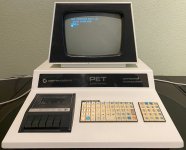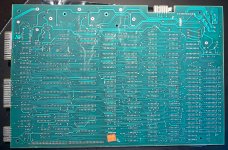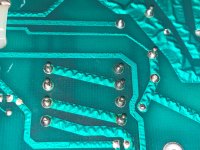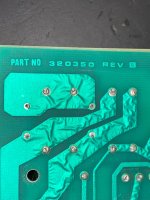Your board may well be one of the last production runs of the Dynamic PET board, most of the date codes on the IC's are 1979, so it is possible it could have been made in 1980 too.
The purple ceramic body 8116 DRAM IC's (equivalent of the 4116) look quite lovely. They will be excellent DRAM IC's. Probably explains why they are still working. Many of the poorer quality types have failed by now.
You even have ceramic equivalents of the 2114 SRAM IC's, and no surprise, they are still working. You may well have one of the most perfect dynamic PET pcb's on the Planet. (you can't count the ones that the Aliens took off planet to study Commodore's technology, ha ha).
I fitted my dynamic PET board with purple ceramic 4116's too, but I could not find the Fujitsu ones that yours has. However, I found some that were made by the USSR's military/industrial complex that appear equally as good and reliable. I bought out the remaining stock from the sellers who had these in Ukraine. IC's built on a ceramic substrate are better than ones in epoxy housings, especially as many decades pass by since they were made, because ceramic & glass is physically more stable than plastic. The 4116 DRAM IC is amazingly internally complex, much more so than any typical logic IC in the same sized package.
You will notice on most of the board where IC's were soldered in etc, there is no flux, as it was all cleaned away after the wave soldering. The diodes and a few other parts in the power supply area were fitted last, by hand soldering, and that is why the flux is still there.
If you want, you could clean that flux off, using cue tips and some CO contact cleaner made by CRC.






